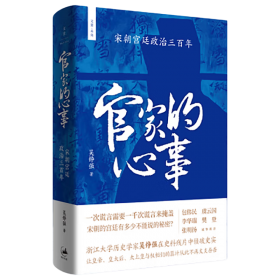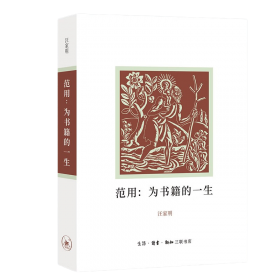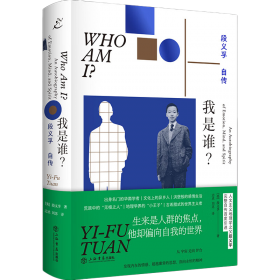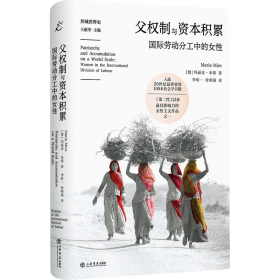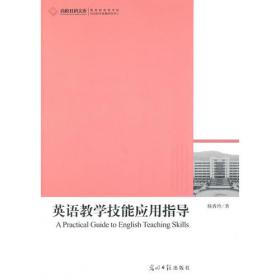英语测评--理论与实践(英文版)
出版时间:
2021-09
版次:
1
ISBN:
9787305242960
定价:
50.00
装帧:
平装
开本:
16开
页数:
180页
1人买过
-
本书是随着国家英语能力等级量表研发、国家外语能力测评体系建设工作的有序推进,作者针对不断优化的顶层设计之下一线英语教师和英语师范生存在的测评理念陈旧,测评知识缺失,测评技能低下等问题进行深入研究的成果。本书分为三部分。第一部分测评理论,论述了测评的目的、方法、分类、原则及其开发;第二部分测试性评估,详述了听、说、读、写四项语言技能的测评;第三部分非测试评估,阐述了课堂观察、学习档案袋、学习日志、叙事评价、访谈、学生自评、同伴互评等评估手段。本书着力将抽象的理论用具体的教例呈现出来,将划一的测评规则用操作的方式表现出来,将先进的测评理念用技能的方式外化出来,力求为英语教师提供便于实际应用的测评手册。 杨香玲,甘肃省天水人,硕士,天水师范学院外国语学院教授,硕士生导师。研究方向为英语教学与测评。在《中国外语教育》《兰州大学学报》《吉首大学学报》《英语研究》等期刊发表论文40余篇;出版专著3部,参编教材1部。主持并完成国家基础教科研项目3项,甘肃省教育厅教科研项目6项,甘肃省教育规划项目2项。获全国教育硕士优秀教师奖,甘肃省高校社科优秀成果二等奖2项,天水市社科优秀成果二等奖2项,校级教书育人和教学科研骨干奖多项。 Part I Theory of Language Assessment
Chapter One An Introduction to Language Assessment
1.1 The Relationship among Testing, Assessment, and Teaching
1.1.1 What is testing?
1.1.2 Testing and teaching
1.1.3 Assessment and teaching
1.2 Approaches to Language Assessment
1.2.1 Approaches to language testing
1.2.2 Approaches to non-testing assessment
1.2.3 Differences between testing assessment and non-testing assessment
1.3 Purpose of Assessment
1.3.1 Purpose of testing assessment
1.3.2 Purpose of non-testing assessment
1.4 A Look at the Current Large-Scale Tests at Home and Abroad
1.4.1 PETS (Public English Test System)l--5
1.4.2 CET(College English Tests)
1.4.3 TEM(Test for Enghish Majors)
1.4.4 TOEFL(Test of English as a Foreign Language)
1.4.5 IELTS(The International English Language Testing System)
Chapter Two Types of Assessment
2.1 Types of Testing Assessment
2.1.1 Tests classified by purposes
2.1.2 Tests classified by ways of testing
2.1.3 Testing classified by language measuring forms
2.1.4 Testing classified by score interpretation
2.1.5 Testing classified by scoring methods
2.1.6 Testing classified by test influence
2.1.7 Other test categories
2.2 Types of Non-testing Assessment
2.2.1 Diagnostic assessment
2.2.2 Authentic assessment
2.2.3 Formative assessment
2.2.4 Sizing up assessment
2.2.5 Instructional assessment
Chapter Three Principls of Assessment
3.1 Validity
3.1.1 Definition of validity
3.1.2 Features of validity
3.1.3 Types of validity
3.1.4 Factors affecting test validity
3.1.5 Methods making tests more valid
3.2 Reliability
3.2.1 Definition of reliability
3.2.2 Types of reliability
3.2.3 Reliability coefficient and obtaining methods
3.2.4 Methods making tests more reliable
3.2.5 The relationship between validity and reliability
3.3 Backwash
3.3.1 Introduction to backwash
3.3.2 How to achieve beneficial backwash?
3.4 Practicality
3.5 Authenticity
Chapter Four Stages of Test Development
4.1 Thinking Stage--Stating the Test Problems
4. 2 Developing Stage--Providing a Solution to the Problems
4.2.1 Drawing up test specifications
4.2.2 Writing items
4.3 Implementing Stage
4.3.1 Administering
4.3.2 Scoring and giving feedback
Part Two Testing Assessment
Chapter Five Assessing Listening
5.1 Nature of Listening
5.1.1 Definition of listening
5.1.2 Characteristics of listening
5.1.3 Factors affecting listening
5.1.4 Types of listening
5.1.5 Difficulties in listening teaching
5.2 Constructing Listening Test
5.2.1 Specifying all possible contents
5.9.2 Setting the tasks
5.3 Scoring Listening Tests
Chapter Six Assessing Speaking
6.1 Nature of Speaking
6.1.1 Definition of speaking
6.1.2 Importance of speaking ability
6.1.3 Features of spoken English
6.1.4 Constitutive elements of spoken English
6.1.5 Difficulties in testing speaking skills
6.2 Constructing Speaking Test
6.2 . 1 Specifying all possible contents
6.2.2 Choose appropriate techniques
6.2.3 Suggestions for the tester on planning and conducting speaking test
6.2.4 Tips for the test
6.2.5 Four stages of training the interviewers
6.3 Ensure Valid and Reliable Scoring
6.3.1 Principles of scoring
6.3.2 Approaches to scoring
6.3.3 Training of scorers
Chapter Seven Assessing Reading
7.1 Nature of Reading
7.1.1 Definition of reading
7.1.2 Models of reading
7.1.3 Strategies of reading
7.1.4 Factors affectin
-
内容简介:
本书是随着国家英语能力等级量表研发、国家外语能力测评体系建设工作的有序推进,作者针对不断优化的顶层设计之下一线英语教师和英语师范生存在的测评理念陈旧,测评知识缺失,测评技能低下等问题进行深入研究的成果。本书分为三部分。第一部分测评理论,论述了测评的目的、方法、分类、原则及其开发;第二部分测试性评估,详述了听、说、读、写四项语言技能的测评;第三部分非测试评估,阐述了课堂观察、学习档案袋、学习日志、叙事评价、访谈、学生自评、同伴互评等评估手段。本书着力将抽象的理论用具体的教例呈现出来,将划一的测评规则用操作的方式表现出来,将先进的测评理念用技能的方式外化出来,力求为英语教师提供便于实际应用的测评手册。
-
作者简介:
杨香玲,甘肃省天水人,硕士,天水师范学院外国语学院教授,硕士生导师。研究方向为英语教学与测评。在《中国外语教育》《兰州大学学报》《吉首大学学报》《英语研究》等期刊发表论文40余篇;出版专著3部,参编教材1部。主持并完成国家基础教科研项目3项,甘肃省教育厅教科研项目6项,甘肃省教育规划项目2项。获全国教育硕士优秀教师奖,甘肃省高校社科优秀成果二等奖2项,天水市社科优秀成果二等奖2项,校级教书育人和教学科研骨干奖多项。
-
目录:
Part I Theory of Language Assessment
Chapter One An Introduction to Language Assessment
1.1 The Relationship among Testing, Assessment, and Teaching
1.1.1 What is testing?
1.1.2 Testing and teaching
1.1.3 Assessment and teaching
1.2 Approaches to Language Assessment
1.2.1 Approaches to language testing
1.2.2 Approaches to non-testing assessment
1.2.3 Differences between testing assessment and non-testing assessment
1.3 Purpose of Assessment
1.3.1 Purpose of testing assessment
1.3.2 Purpose of non-testing assessment
1.4 A Look at the Current Large-Scale Tests at Home and Abroad
1.4.1 PETS (Public English Test System)l--5
1.4.2 CET(College English Tests)
1.4.3 TEM(Test for Enghish Majors)
1.4.4 TOEFL(Test of English as a Foreign Language)
1.4.5 IELTS(The International English Language Testing System)
Chapter Two Types of Assessment
2.1 Types of Testing Assessment
2.1.1 Tests classified by purposes
2.1.2 Tests classified by ways of testing
2.1.3 Testing classified by language measuring forms
2.1.4 Testing classified by score interpretation
2.1.5 Testing classified by scoring methods
2.1.6 Testing classified by test influence
2.1.7 Other test categories
2.2 Types of Non-testing Assessment
2.2.1 Diagnostic assessment
2.2.2 Authentic assessment
2.2.3 Formative assessment
2.2.4 Sizing up assessment
2.2.5 Instructional assessment
Chapter Three Principls of Assessment
3.1 Validity
3.1.1 Definition of validity
3.1.2 Features of validity
3.1.3 Types of validity
3.1.4 Factors affecting test validity
3.1.5 Methods making tests more valid
3.2 Reliability
3.2.1 Definition of reliability
3.2.2 Types of reliability
3.2.3 Reliability coefficient and obtaining methods
3.2.4 Methods making tests more reliable
3.2.5 The relationship between validity and reliability
3.3 Backwash
3.3.1 Introduction to backwash
3.3.2 How to achieve beneficial backwash?
3.4 Practicality
3.5 Authenticity
Chapter Four Stages of Test Development
4.1 Thinking Stage--Stating the Test Problems
4. 2 Developing Stage--Providing a Solution to the Problems
4.2.1 Drawing up test specifications
4.2.2 Writing items
4.3 Implementing Stage
4.3.1 Administering
4.3.2 Scoring and giving feedback
Part Two Testing Assessment
Chapter Five Assessing Listening
5.1 Nature of Listening
5.1.1 Definition of listening
5.1.2 Characteristics of listening
5.1.3 Factors affecting listening
5.1.4 Types of listening
5.1.5 Difficulties in listening teaching
5.2 Constructing Listening Test
5.2.1 Specifying all possible contents
5.9.2 Setting the tasks
5.3 Scoring Listening Tests
Chapter Six Assessing Speaking
6.1 Nature of Speaking
6.1.1 Definition of speaking
6.1.2 Importance of speaking ability
6.1.3 Features of spoken English
6.1.4 Constitutive elements of spoken English
6.1.5 Difficulties in testing speaking skills
6.2 Constructing Speaking Test
6.2 . 1 Specifying all possible contents
6.2.2 Choose appropriate techniques
6.2.3 Suggestions for the tester on planning and conducting speaking test
6.2.4 Tips for the test
6.2.5 Four stages of training the interviewers
6.3 Ensure Valid and Reliable Scoring
6.3.1 Principles of scoring
6.3.2 Approaches to scoring
6.3.3 Training of scorers
Chapter Seven Assessing Reading
7.1 Nature of Reading
7.1.1 Definition of reading
7.1.2 Models of reading
7.1.3 Strategies of reading
7.1.4 Factors affectin
查看详情

 占位居中
占位居中




